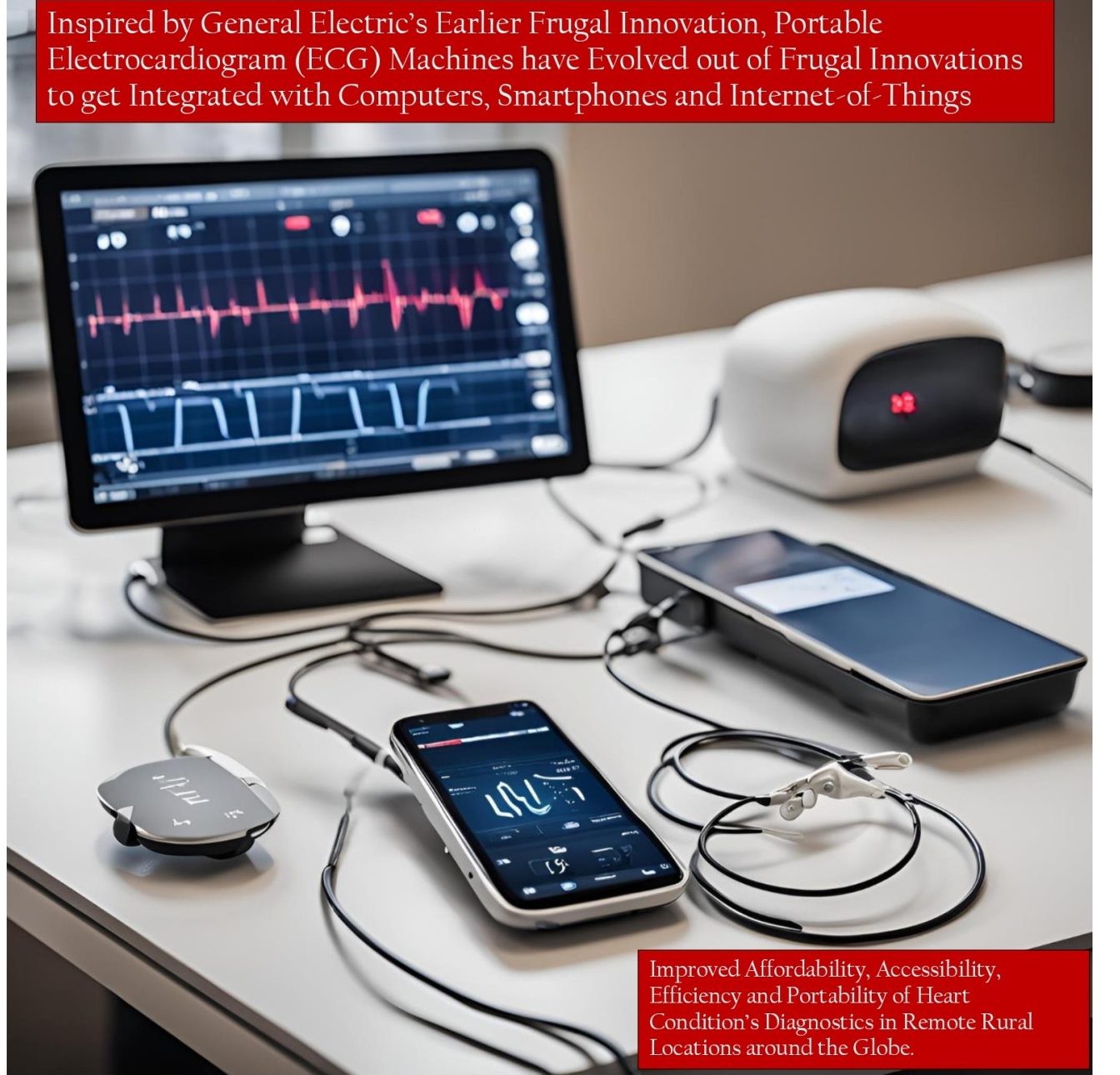Professor Boniface Okanga and Dr Antony Matemba Sambumbu
London, United Kingdom, June 7, 2024
Lafayette Street Bridge, a Case of a Public Project Completed through Public-Private Partnership, is one of the major bridges in the Michigan State that links and connects Bay City’s South End and the West Side
Given the scale, complexities and costs of implementing the contemporary public projects, the use of public-private partnership is quite essential for enhancing the successful implementation of public projects. It enables the government access unique skills, resources and technologies from the private sector. This improves the capabilities of government entities to successfully execute all the complex activities that are critical for enabling the successful implementation of the project. As the United States government seeks to improve the quality of its infrastructure in order to improve the general condition and standard of living of its population, the use of public-private partnership has emerged as one of the effective strategies for enhancing the successful implementation of public projects. Even if some critics construe public-private partnership to increase the costs of public projects’ implementation as well as to cause delay as the external private service providers are sought and engaged as critical partners, public-private partnership is still one of the pivotal antecedents for enhancing the successful public projects’ implementation.
Public-private partnership is the long-term contractual arrangement/agreement in which the government provides the selected private sector players with the mandate to wholly create, finance and implement certain service delivery projects which are paid for by the tax revenues or user fees that the engaged private sector institution collects for the designated period of the contract. This enables the government to engage in the implementation of as any array of different public projects as possible to improve the overall socio-economic conditions and standards of living of the population.
In the United States, a critical analysis of how the use of public-private partnership would influence the successful implementation of public projects is reflected in the Lafayette Street Bridge Rebuilding Project in Michigan.
Lafayette Street Bridge is one of the major bridges in the Michigan State that links and connects Bay City’s South End and the West Side (Trae & Mose, 2023). Lafayette Street Bridge was constructed and completed in 1938. Due to its aging status and faster depreciation requiring constant higher maintenance costs, the Michigan Department of Transportation (MDOT) emerged with the plan to demolish and reconstruct the bridge in order to adopt the more durable and quality form of modern bridges. Since the bridge was also constructed on a pile of timber than concrete, it was also feared to be risky to continue using the bridge for the modern more complex heavy duty transport vehicles.
To mitigate the risks associated with its continued usage, the first extensive major repairs and superstructure replacement was undertaken in 1989 (Hall, 2019). However, as the maintenance costs kept increasing, MDOT commissioned a feasibility study on the bridge’s continued usage and maintenance or complete replacement. The study recommended full replacement of Lafayette Street Bridge since it would be illogical to continue meeting the constantly increasing repair and maintenance costs as the bridge continues to age and depreciate.
Due to the complexity of the project as well as its higher costs of implementation, Michigan Department of Transportation used the construction manager/general contractor approach which is some form of public-private partnership to partner with the contractor specializing in the construction of moveable bridges.
Partnership with the specialist contractor provided more expertise that improved the capabilities of MDOT to come up with a better design as well as innovativeness that improved the quality and overall attractiveness of the bridge to respond to the demands of the increasingly sophisticated population of the United States.
Initially the project could not start off due to poor understanding of the required design and the cost of the project, but the engagement of the private bridge construction specialist streamlined the budgeting processes to eliminate other costs and wastes to settle for $112 million as the entire funds that would be required for the implementation of the project. This implies public-private partnership is quite essential for offering the expertise that improve faster project implementation,
Offers Resources for Public Project Implementation
Public-private partnership offers the required critical resources for the modern governments to implement as an array of different projects as possible. It is a new approach to public administration and management that enables the government to engage, collaborate and partner with the important private sector players in the construction and delivery of the important public projects. Since the engaged private sector companies are engaged to provide financial resources that they recoup through taxes or user fees or any other levies during the course of the contracted period, public-private partnership enables the government to eliminate higher interests that the government could have paid to the commercial banks that often charge higher interests on the provided loans. It also enables governments eliminate donor-funds that often have attached strings or certain undesirable conditions that the government must comply with in order to access the funding.
Public-private partnership lowers not only the costs of implementing public projects, but also the costs of equipping, operating and maintaining as the public project is completed for the public to begin using the newly constructed public facility. During the time that the private contractor takes charge of the process of operating the newly established government facility, it is the private contractor who often equips the project with the required personnel and equipment. To ensure that the employees of the newly established public facility have the required skills and competencies, the private contractor also contributes to the training and development of the government personnel.
This improves the capacity and capabilities of the government institution to the extent that by the time the public-private partnership comes to an end, the government will have gained and developed the capabilities to manage and run the mega projects like the Lafayette Street Bridge without requiring any further external assistance and support. The extent to which public-private partnership can offer the required financial resources for the implementation of public projects is reflected in the Lafayette Street Bridge replacement project.
Due to the higher costs required for overhauling the foundation of the bridge that was originally constructed on timber piles as well as to come up with the new bridge that would delight residents of Michigan and the United States at large, the project could not kick off in 2019 due to lack of funds(French, 2023). It was not until the Federal Government offered $73 million federal grant that the commencement of the project’s execution was scheduled to start in January 2024 (French, 2023).
Lafayette Street Bridge rebuilding project to begin in 2024
However, if public-private partnership was used for the replacement of the Lafayette Street Bridge, such delays would have been avoided. Besides offering the essential resources that are required for the successful public project implementation, public-private partnership improves the efficiency of public project implementation.
Improves Efficacy and Efficiency of Public Project Implementation
Public-private partnership improves the efficacy and efficiency of public project implementation. Since the private sector players are interested in profit generation, they may tend to invest time and the required resources to enhance the faster implementation of the project. They will invest time and the required resources to ensure that the project is speedily completed to enable them recoup the initial cost of investment as soon as possible. It is such profit driven quests that drive public-private partnership to influence the efficacy and efficiency of public project implementation. Public-private partnership is also quite essential for offering the expertise that improves faster project implementation.
The use of such specialist and experts improves the capabilities of the government to plan and execute different activities at the time that they are supposed to be executed. Such experts and specialists often have enormous skills, tactfulness and experience that influence the overall successful project implementation. Yet as this improves the precision of the project managers’ decisions, it also tends to bolster the overall quality of the project management decisions. This subsequently enhances the overall effectiveness of the process of project implementation.
Better quality decisions influence reduction of wastes to impact positively on the extent to which the project managers are able to utilise the limited resources to influence the successful project implementation. The unique skills and competencies offered by the private sector players not only influence the efficacy and efficiency of project implementation, but also the innovativeness and creativity that improve the design and attractiveness of the project features once completed. Higher level of specialization and expertise enables the engaged project personnel from the private sector to evaluate and re-evaluate their decisions to emerge with and implement more delighting project concepts.
This improves the extent to which the government institution is able to create and deliver projects that delight the citizens. Providing projects that respond to the needs and demands of the citizens bolster improved confidence and trust of the citizens in the government institution to plan and deliver the required quality public services and products. In the process of improving the efficacy and efficiency of public projects’ implementation, usage of public-private partnership also improves the project risk identification and mitigation.
Project Risk Identification And Mitigation
Project risk identification and mitigation is quite important for enhancing the successful project implementation. Through the combined capabilities of the government institution and the engaged private sector player, public-private partnership enables the government easily identify and mitigate any risks that can affect the successful project implementation. As empirical facts from Edinburgh Trams project which was almost marred by politicization indicate, the first improved risk identification and mitigation capabilities arise from the fact that since the funding for the public-private partnership is provided by the contracted private company, the government often acts as the financial insulator in the event of financial risk emerging to undermine the successful project implementation.
In the Edinburgh Trams case, though there were threats of underfunding as instigated by the opposition political parties’ sabotage, the City of Edinburgh Council still came in to avail the project with the required funding. Quite often, it is the engaged private company that finances the planning, design and implementation of the project.

Edinburgh Trams: The City of Edinburgh Council’s 10-Year Transport Vision
However, if the engaged private company experiences any form of liquidity related issues along the way, the government can easily come in to renegotiate the terms under which it can provide the funding to complete the implementation of the project. For complex mega projects, this offers better financial advantages as compared to if the project was being implemented by just the government or by just the contracted private sector organisation.
Through public-private partnership, the government is also able to access some of the best experts and specialists that improve the accurate risk identification and mitigation. Having the required experts influences the effectiveness of proactive project risk identification and mitigation during the feasibility analysis stage. Using the required skills and competencies as combined with the use of the required technologies, the experts are able to accurately analyse and predict some of the risks that may affect the successful project implementation. Because the engaged private sector players are motivated by the quests for profit generation, they are also most likely to place the required efforts to ensure that all the potential risks that can disrupt the project’s implementation are proactively identified and mitigated.
This transfer of risks from the government to the private sector influences effective risk identification and mitigation. This is because as compared to the government institutions that tend to execute different functions at the same time to affect concentration and accurate detection and mitigation of the unfolding risks, the contracted private sector organisations are often specialists that tend to concentrate and ensure that all risks are identified and mitigated.
If the risks are not proactively identified and mitigated, to the private sector organisation, it either implies that it may cause the increment of costs that may affect their profit margins or that it may lead to project failure to affect the extent to which they can be paid for the project. If the project is completed, it means the contracted private sector player can begin to recoup the initial costs of project implementation through tax collection or collection of user fees.
To avoid loss of such revenues, the engaged private sector players often ensure that nothing disrupts the project during its execution and for a long time after it is completed and handed over to the government. In the long run, this also implies public-private partnership improves the quality of public projects.
Improves Quality of Public Projects
Public-private partnership improves the quality of public projects. It is because the engaged private sector organisations often have the requisite qualified personnel who put in the desired creativity and innovativeness to ensure that the project offers the best. As compared to the personnel in government who are often involved in the implementation of multiple projects at the same time, the personnel in the engaged private sector organisations are often specialists and dedicated experts who have enormous time to think and rethink how a particular project must be accomplished. This improves the extent to which they are able to come up with the best to bolster the capabilities of the project to respond to the needs and demands of the local population.
Besides private sector players are also from the general public that understand what the general population in a particular area feel the government must do for them. As the personnel in government may be defensive in trying not to create and offer certain services, the contracted private sector organisations may attempt to find the best ways through which all the essential features of the project are provided to the population.
In a bid to delight the government and improve their brand image, they tend to assess how the best features and quality of the project can be integrated and offered without significantly affecting the overall cost structure and components of the project. It is such high level of creativity and innovativeness that influence the improvement of the quality and features of the projects implemented through public-private partnership. Yet as the engaged private sector player delivers the best quality projects, it also improves the government’s overall capabilities to improve the general condition and standards of living of the population. It enables the government to respond to the needs and preferences of the population. If consistent for a long time, this improves the overall confidence and trust that the general population have in the government.
REFERENCES
Akampurira E., Root D., Shakantu W. (2017). Stakeholder perceptions in the factors constraining the development and implementation of public-private partnerships in the Ugandan electricity sector. Journal of Energy in Southern Africa, 20(2), 2–9.
Albalate D., Bel G., Bel-Piñana P., Geddes R. R. (2015). Risk mitigation and sharing in motorway PPPs: A comparative policy analysis of alternative approaches. Journal of Comparative Policy Analysis: Research and Practice, 17(5), 481–501.
Ameyaw E. E., Chan A. P. (2013). Identifying public-private partnership (PPP) risks in managing water supply projects in Ghana. Journal of Facilities Management, 11(2), 152–182.
Azarian, M., Shiferaw, A.T.; Stevik, T.K.; Lædre, O., & Wondimu, P.A. (2023). Public-Private Partnership: A Bibliometric Analysis and Historical Evolution. Buildings, 13(2), 166-192.
French, C. (2023). Project to replace Bay City’s Lafayette Bridge gets $73M boost from federal grant. Bay City: MorningLive.
Hall, J. (2019). MDOT delaying construction of the new M-13/M-84 (Lafayette Street) bridge in Bay City. Bay City: Michigan Department of Transportation (MDOT).
Kim, S. and Kwa, K.X. (2020), “A closer look at risk factors for Public-Private Partnerships in Singapore: six case studies”, Asian Journal of Political Science, Vol. 28 No. 2, pp. 142-163.
Kroon D. P., Noorderhaven N. G., Corley K. G., Vaara E. (2021). Hard and soft integration: Towards a dynamic model of post-acquisition integration. Journal of Management Studies, 59(5), 1132–1161.
Kuchina-Musina D., Morris J. (2022). Buying innovation: An examination of public–private partnerships and the decision process for contracting out innovation. Politics & Policy, 50(3), 503–515.
Leigland, J. (2018). Public-Private Partnerships in Developing Countries: The Emerging Evidence-based Critique, The World Bank Research Observer, Volume 33, Issue 1, February 2018, Pages 103–134.
Lember V., Petersen O. H., Scherrer W., Ågren R. (2019). Understanding the relationship between infrastructure public‒private partnerships and innovation. Annals of Public and Cooperative Economics, 90(2), 371–391.
Liu, L. X., Clegg, S., & Pollack, J. (2023). The Effect of Public–Private Partnerships on Innovation in Infrastructure Delivery. Project Management Journal, 10(10), 144-163.
Moradi Shahdadi, L.; Aminnejad, B.; Sarvari, H., & Chan, D.W.M. (2023). Determining the Critical Risk Factors of Implementing Public–Private Partnership in Water and Wastewater Infrastructure Facilities: Perspectives of Private and Public Partners in Iran. Buildings, 1(3), 27-35.
Remington, T.F. and Yang, P. (2020), “Public-Private Partnerships for skill development in the United States, Russia, and China”, Post-Soviet Affairs, Vol. 36 No. 5-6, pp. 495-514.
Schoeni D. (2018). Whither innovation? Why open systems architecture may deliver on the false promise of public-private partnerships. Administrative Law Review, 70(2), 409–459.
Trae, H., & Mose, H. (2023). Lafayette Street Bridge Rebuilding Project to begin in 2024. Bay City: WNEM.
Walsh, C., Mital, A., Ratcliff, M., Yap, A. and Jamaleddine, Z. (2020), “A Public-Private Partnership to transform online education through high levels of academic student support”, Australasian Journal of Educational Technology, Vol. 36 No. 5, pp. 30-45.
Wang H., Xiong W., Wu G., Zhu D. (2018). Public-private partnership in public administration discipline: A literature review. Public Management Review, 20(2), 293–316.
Wokadala, J. and Barungi, M. (2015), “Benefit incidence analysis of government spending on publicprivate partnership schooling under universal secondary education policy in Uganda”, Africa Education Review, Vol. 12 No. 3, pp. 381-397.
Xiong W., Zhong N., Wang F., Zhang M., Chen B. (2022). Political opportunism and transaction costs in contractual choice of public-private partnerships. Public Administration, 100(4), 1125–1144.
Yescombe, E.R., & Farquharson, E. (2018). Public-Private Partnerships for Infrastructure: Principles of Policy and Finance. Oxford: Elsevier by Butterworth-Heinemann.
Authors:
Professor Okanga is the Director: Department of Research and Business Analytics at Cloud Analytika-London, United Kingdom. He is also the Associate Researcher at The Business School, Edinburgh Napier University, Scotland-United Kingdom. E-mail: boni@cloudanalytika.co.uk
Dr Antony Matemba Sambumbu is the Country Director: The International Institute of Chartered Educational Practitioners (IICEP)-South Africa. E-mail: sambumbu111@yahoo.com











